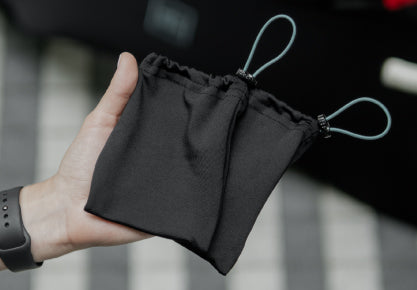Cheating history of Tour de France

When it comes to cheating in sports, cycling is the king and everyone else is playing in amateur leagues. Not talking about doping of course, but just some genius ideas in bike alterations and modifications, route changes, using different transport on some stages, maybe filling your bottle with rocks not water, when going downhill etc.
We’ve decided that this creativity should be reviewed and appreciated, so here are some of the best legendary cheating cases.
1. A great comeback
The first Tour de France was held in 1903 and immediately, there was cheating. Incredible and extra creative cheating. Much of it centered on one man, Hippolyte Aucouturier, who looks like a stereotypical Warner Bros cartoon character from the 1950s.

After his first race where he had to quit forcefully, since somebody handed him a spiked lemonade that made him experience stomach cramps, he returned the next year with a little trick in his mind.
Turns out Aucouturier was being spotted on one stage taking a tow from a car by means of a length of string attached to a cork that he gripped between his teeth. For miles he was dragged behind a car with a cork in his mouth, just to win. He would have gotten away with it too, but the car pulling him drove too fast. Aucouturier reached the end of the stage just minutes after race officials, who were also riding by car.
2. Maurice Garin’s train to victory
Now it’s 1904, and the second Tour de France, the same year Hippolyte Aucouturier was dragged by his teeth by a car. Garin is the people’s champion, he is also famous for smoking all the time during the race and eating and drinking a lot (also alcohol), while being on a bike. He wins the race, much to the delight of fans — but in an ensuing investigation it’s found that Garin and several other top competitors also cheated and were forced to lose their titles After an investigation, it revealed that the riders had taken a train for part of a stage, put itching powder in competitor's shorts, and had conspired with a group of his supporters who attacked rival riders with sticks, as well as showering the road with broken glass and tacks to puncture competitors tires.
Cheating was so loud in the 1904 Tour de France that it was unclear if the race would ever happen again.

3. Heavy water
Jean Robic was a small man. He was only 5’3 and weighed 130 pounds (59 kg), which caused fans to give him the nickname “Kid Goat.” Later his nickname changed to “Leather-head,” because he was forced to wear a leather helmet in order to protect a steel plate inserted in his skull following a bad crash.
Jean won the first race after World War II in 1947, and still holds his title, even though some time later it was revealed how he compensated his weight going downhill.
Every time Robic reached the summit of a mountain his crew would hand him a water bottle. It was assumed he needed hydration following a difficult climb, but in reality there was no water in the bottle. Typically it would be filled with mercury or lead, designed to increase Robic’s weight in the ensuring downhill section — at which time he would jettison the bottles and continue to race.
This tactic was adopted by other riders, and soon the practice of weighted bottles became commonplace in cycling.

4. New route, new race
Pat Boyd was one of the toughest cyclists of the 1950s, but his bike wasn’t quite so resilient. During a road race in Belgium the Englishman was battered by rough cobblestone streets, causing his bike to get a flat tire and force a repair. This left Boyd at the back of the pack, and seemingly out of the race. After pedaling really hard, he joined another of the last riders, who was a local. The local rider knew Boyd and decided to show him a little shortcut alley, that could be his only chance to catch up with the rest of the group and fight for his way to be in the top 10. And so he did! Except… Turns out there was another race taking place at the same time, and he finished in the race, he never actually started, so his score wasn’t registered and the race he actually started and aimed to win, he finished last.

5. New era of cheating
As the time goes and evolves, so does the cheating technology, physical doping is no longer the case, but mechanical doping is something we’ve heard more and more about! With more eyes on race routes and more people watching, it’s given rise to ingenious new inventions: Hidden motors. It’s called “mechanical doping,” and is the latest practical issue cycling is trying to correct. Early prototypes came into existence in 2010, but it’s only in the last few years that these concepts have been perfected. Essentially a small motor is hidden in the seat tube of the bike, which isn’t large enough to power a bike — but it is big enough to provide assistance to the cyclist.
In 2016, Femke Van den Driessche was forced to withdraw from the under-23 race at the cyclo-cross world championships after a motor was found in her bicycle during a post-race inspection.
Now there’s a new incident, this time in Italy following a Master’s race. A 53-year-old rider was found with a motor in the seat tube of his bike and disqualified after a heat gun found the problem.

“We had some precise information and we proceeded accordingly. We looked, we saw that in the seat tube of one rider it looked as though there was a fire.”
Probably it’s only a matter of time before the cycling industry will learn how to shut down this mechanical doping, and even a smaller matter of time, before cyclists will come up with a new method, so we’re looking forward to it, since this kind of creativity is never-ending and always surprising!





























Leave a comment